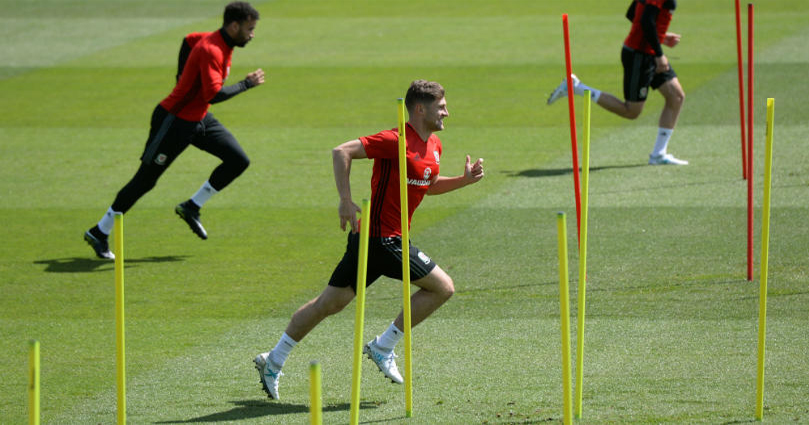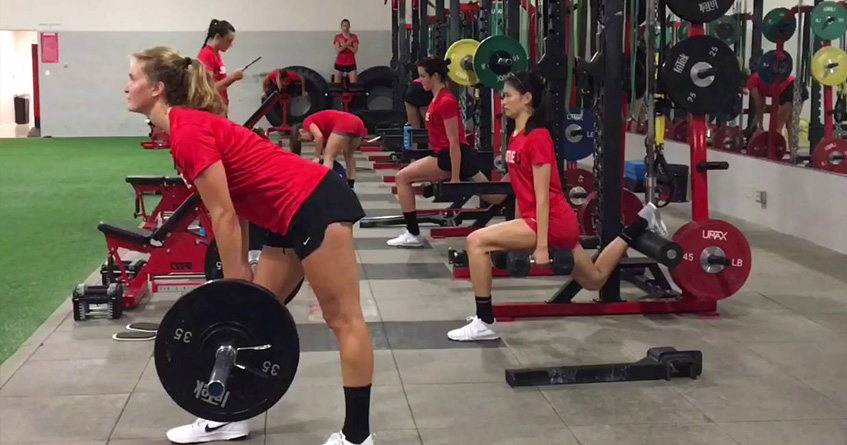Technology (Shoping list)
A friend of mine asked me the other day what equipment to buy for his team. They got a budget and they want to invest in buying equipment. This got me thinking, so I decided to try and put some of my thoughts on paper regarding this issue.
I am also contemplating about writing a book (or at least manual) in which I should try to organize my not-so-evidence-based subjective opinions, thoughts, experiences and wishful thinking that have been flying in my head for some time into something that could be concise usable form. Equipment thing should also be covered, so I won’t go very deep in this blog post.
Rule #1: People > Technology
If you have a lot of budget, I would consider hiring better people (and this could be players or coaching staff) than investing in equipment. You definitely cannot operate a patient or make world class meal without tools, but after certain threshold (or minimum of equipment needed) coaching is much more important. If your organization is below this minimum threshold (hell, you cannot coach 30 athletes with single dumbbell, at least not optimally) then investing into equipment is a must, but after that I would put more weight on bringing experience and motivated coaching staff than investing in latest gadgets.
I am aware that some clubs and Universities use technology and facilities to “lure” athletes/talents (including staff) and I hope that they end up using that technology in a productive way – at least more productive than creating pie charts for the board.

Rule #2: Intervention > Monitoring
If you are not being able to intervene, no amount of monitoring technology will help you. So putting money in “interventions” before than putting it in monitoring tools is a priority in my opinion. What do I mean by this?
Before investing money in nutrition counseling and/or analysis (including blood analysis or even supplements), I would put my money in, believe it or not, cooking classes. Most of the athletes live alone, are eating junk in their free time, so teaching them how to cook (coaching staff should participate also, at least me) in a fun healthy and practical way will bring much more benefits than worrying about macros, intermittent fasting, zone, LCHF and debates between Lyle McDonald, Alan Aragorn and Gary Taubes.
Monitoring sleep and recovery? Omegawave? Well, can be useful, but I would invest money into intervention tools first. For example, setting up a quiet, dark and cold “nap room” inside the facility where athletes (and staff) can take 15-30min naps, along with “chill out rooms” where athletes can snack, rehydrate, chill out and play Sony Playstations. Investing in CPD classes can be also a really good long term strategy if you really care about your athletes. Things such as financial counseling and education, learning second language (or local language for international players) or something else that can be useful in the long run after sport career (“nigh schools”, online degrees, licenses and so forth). Helping international athletes and their families to get life organized, socially active, meeting other player’s families and kids and so forth. Bored athlete’s spouse can wreck havoc on athletes (emotional) life and marriage. Let’s not forget these “elephants in the room”. Happy wife – happy life.

As per recovery, how does measuring NMF helps the squad if you cannot intervene? Hence, getting compression garments for travel, the novel cold/compression machines, ice pools, chocolate milk and protein shakes and so forth should be given priority.
Rule #3: Simplicity > Complexity
There are quite complex tools that could be used, but they are used occasionally and demand education of the staff or even bringing specialized sport scientists (or dare I to say sport technologist – which should be the correct term for these guys).
I would prefer something that is easy to use, and will be used continuously. Having said that, it is important to have centralized, standardized and integrated storage of all data collected, and as many of you know my choice is always SMARTABASE. If your data is stored on multiple staff computers and different Excel formats or software databases it would be really hard to makes sense of it and create quick reports and dashboards for daily use.
Expanding this rule a bit, there are tools that can do multiple things. I believe that in this case “specialization” is important – select a tool that is good at one thing. Some of the timing gates can do “reactive agility” (haven’t seen athlete running on a pitch and reacting to colored lights yet), but that makes them more expensive and complex. I would rather go with simple timing gates that do just that – time. The usage will be easier, they will be more robust and cheaper and probably simpler to repair if something happens.
I would also choose a tool that can automate the data collection and minimize the copy-paste actions and the need for an operator. Having APIs (a “code” that allows a talk between two software and/or hardware) can make life much easier and more reliable by making data input automatic. Hence the need for centralized storage that allows such a thing.
Also, I hate wires. They are pain in the arse. Some of my colleagues love wires, mostly because they think they never fail, but I just can’t stand the clutter they make. The new tools should be wireless and allow for storage on the cloud. Having automatic athlete identification can also be helpful (RFID bands and such) in avoiding paper work and copy-paste actions. Having live leader board can help in creating competitive atmosphere (i.e. gamification) as well and hence influence higher effort from the athletes. It is up to the coaches to create such an atmosphere using the equipment, not to the equipment. And sometimes equipment slow the things down.
The list
I know you might be waiting for the list of equipment, but unfortunately I cannot be exact since it depends on the goals of the use and budget available. Anyway here is a short list:
- Centralized software (SMARTABASE)
- Wireless timing gates (without fancy reactive agility crap), hopefully with RFID and integration with the above software and live feedback – leader board to allow for competition and historical analysis
- Jump mats – same principle as above.
- Dual force plates, that can differentiate between left and right leg. Useful in RTP protocols and judging NMF (since jump height is not very sensitive). Can be used in testing (i.e. isometric pulls). See more by Matt Jordan and Rob Gathercole.
- Good tools for anthropometry (calipers, scales and so forth)
- If you are REALLY rich, I would consider having DEXA scan and even MRI unit (that could be later “rented” for clinics and thus make money) which can be used in getting scans that could be used in comparison after the injury (or even scanning players before they sign the contract – this is tricky)
- GPS devices. The future might ditch the GPS for the accelerometry which can be much cheaper, smaller and usable with better machine learning algorithms.
- Recovery tools – special room, cold pools, compression garments, saunas, massage therapists
- Tools for rehab – the healthy athletes might not need a lot of equipment, but injured ones needs a lot of modifications (e.g. belt squat, leg press, anti-gravity treadmill, EMS and so forth)
- Extra stuff could be GymAware for the gym, hand held dynamometry (for thing such as groin squeeze), tests for hydration, InsideTracker contract for blood analysis and so forth
I would like to invite everyone to contribute to this list. Mostly by stripping it off, rather than adding things (via Negativa).











Responses